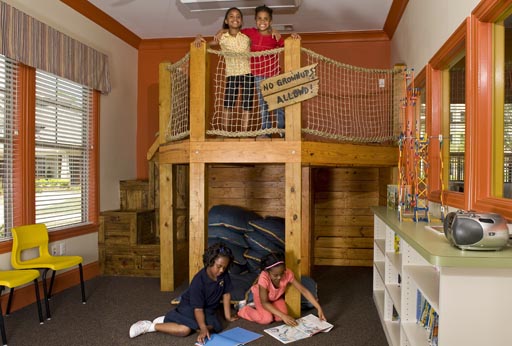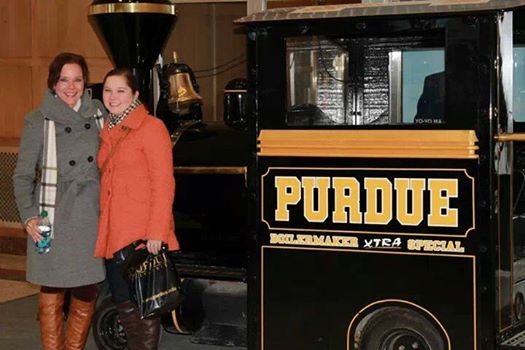by Georgia Center for Opportunity | Jun 18, 2014

courtesy photos-public-domain.com
This week, the Center for Education Reform released its Education Tax Credit Rankings and Scorecard, which evaluates the fourteen tax credit funded scholarship programs across the country.
Georgia’s program, which was created in 2008, received a “B”.
The Georgia program scores well in many of the categories like program design and eligibility requirements. However, we fall out of the top of the rankings because the total program is capped at $58 million annually–which might sound like a lot of money but actually only represents 0.14% of the overall state budget. The program is so popular, the $58 million cap was reached this year in just three weeks. Nearly all of the Student Scholarship Organizations who distribute the scholarships to students have waiting lists.
By contrast, the Florida program, which received an “A”, allocates $286 million in tax credits to fund scholarships that allow almost 60,000 students to attend a school that better meets their individual needs.
Arizona, the other state receiving an “A” grade, does not limit the total dollar value of individual donations and caps corporate donations at $36 million annually. There are more than 42,000 students on tax credit scholarships in Arizona.
Georgia’s program serves about 13,000 students who have moved from a traditional public school to a private school using scholarships funded by individuals and corporations who receive a tax credit for their donations. That represents a mere .007% of Georgia’s 1.7 million public school students.
Because every child is different, we need a variety of options at our disposal when it comes to education. Tax credit scholarships are just one of many ways we can ensure that all Georgia children have access to a quality school. And given our grade in the report card, perhaps we still have more to learn from other states that continue to give even more families the flexibility to meet the educational needs of their children.
To learn more about Georgia’s Tax Credit Scholarship Program and other school choice options in the state, see our 2014 School Choice Handbook.
by Georgia Center for Opportunity | Jun 6, 2014

Prison is not typically the place where men openly share their feelings with each other, for fear of coming across as soft. However, several GCO team members experienced something markedly different while sitting-in on a fatherhood class at Clayton County Transitional Center.[i]
Reflecting on this experience, Breakthrough Fellow Michael Schulte writes:
It was wonderful to see the men open up as they spoke about their children, sharing their names, ages, and where they live now. One man had been away from his two kids for 14 years, and I could see by looking at his face how much it pained him. Many of these men are hopeful for the chance to simply be around their children again.
The fatherhood class is run by It Takes a Village Today (ITAVT), a non-profit whose name is derived from an ancient African proverb emphasizing community responsibility in the upbringing of children. As such, its mission is to preserve children and ensure they have a good upbringing through instilling the values of fatherhood within the men who will be returning to their families from prison.
The class provides a number of important services to the men including offering instruction on what it means to be a good father, helping noncustodial parents identify existing child support orders, and providing assistance in legitimizing children.
Concerning legitimation, Breakthrough Fellow Aundrea Gregg writes:
I was quite astounded by the number of men with unknown numbers of kids – men in need of help discovering once and for all who belongs to them. For fathers hopeful to build stronger relationships with their children, uncertainty of paternity can have serious implications…Any man wishing to gain rights to custody, visitation, or even have their children take their last name must complete the legitimation process…It Takes a Village…provide[s] the legal support that is needed for participants of the program to take paternity tests, file voluntary parental acknowledgement forms, and complete the legitimation process.
In addition to providing practical help, the class offers a forum for the men to speak openly about their children, share their goals as fathers, and reflect upon their own upbringing. Katherine Greene, Program Specialist with GCO, was particularly impacted as the men reflected on what sort of fathers they had while growing up. She explains:
One of the facilitators…asked two thought provoking questions: ‘What was your father like and how do you compare to him?’ Most of their responses surprised me. Many of them described their fathers as being positive role models in their lives. In the words of one inmate, ‘My father was a loving man. He was protective and very strict. He was present in my life. I just made some bad decisions which landed me in here.’ His words, among others who shared that day, really resonated with me.
Each of the GCO team members in attendance left the class feeling privileged to have learned about the men’s lives and were moved by the experience. Patrick Kaiser, Senior Manager of Research and Development, summed up the visit in the following words:
I think everyone should have a similar experience to see that these men are not like criminals portrayed in the media. Rather, they are men who have faced daunting challenges in their lives, made mistakes in how they tackled these challenges, and are looking to make amends for their errors and become positive community members. Many of these men were failed by their communities as children and young adults. We must not fail them again.
[i] Offenders entering transitional centers in Georgia typically have 6-12 months remaining in their sentence.
by Georgia Center for Opportunity | May 27, 2014

Recently, I had the privilege of attending an inspiring seminar sponsored by Chick-fil-A Foundation and Gifted Education Foundation (a GCO partner), entitled “Beyond Inspiration: Moving Ideas to Execution”. As I walked into the Chick-fil-A Discovery Center to find my seat, my eyes wandered around the state of art facility, I was ready to experience the learning lab and to be inspired!
Charles Lee, CEO of Ideation and author of Good Idea. Now What? How to Move Ideas to Execution, was the speaker for the seminar. Charles helps businesses and organizations craft and facilitate amazing ideas via creative business design, branding and innovative problem-solving.
In his opening he stated, “The greatest collections of human treasures are in the graveyard. There are too many songs and too many books that have been buried.” With this image in my mind, a moment of sadness came over me for the people who did not have the opportunity to share their ideas with the world. Then, a smile broke through when I thought about all the possible ideas being executed in the filled room.
Mr. Lee focused on three areas: creating a remarkable idea, idea-making best practices and developing a remarkable brand. When creating a remarkable idea, ask clarifying questions so that our ideas can connect to the world. Ask questions such as Who are You?, What do you do uniquely? , and What does it matter? He informed that a few best practices are to write down your ideas (rational and irrational) in order to stay focused and to take time to breathe in order for your ideas to grow and develop. Mr. Lee encouraged us to develop brand attributes that are “authentically you”. Making sure your visual identity is consistent with your brand is the utmost important internally and externally. These are just some areas discussed during the seminar intended to help inspire us to better execute our ideas.
After the seminar, we were escorted on a tour of the Chick-fil-A’s 80,000 square foot innovation center. My colleagues and I were amazed by this huge warehouse that was designed to encourage people to think outside the box. The space was colorful with an open office environment that celebrated creativity and service. In fact, red boxes climb the wall and hung onto the ceiling until the boxes eventually formed an airplane. This space was truly designed to nurture innovation.
One of my colleagues, Linda Newton, who also attended the event shared how her approach to work productivity was impacted by the workshop. She said, “I have a tendency to be a bit too social at work and often get distracted by others. Some points Charles made concerning productivity have led me to implement two practices that are helping me to be less distracted and more productive. I now only schedule meetings after lunch and I work with my office door closed each morning until lunchtime. These are two simple, yet effective tactics.”
For me, exhilarating and motivating are two words that come to mind when describing my experience at the Beyond Inspiration learning lab with Charles Lee and Chick-fil-A Innovation Center. As I think about the mission of GCO: to remove barriers to opportunity. The very nature of our education advocacy work comes to mind. We have been a strong voice in school choice by helping to expand academic options (i.e. tax credit scholarships, special needs scholarships, public school transfers, private schools and charter schools) for more than 15,000 children in Georgia. Through our grassroots outreach efforts we have trained more than 60 advocates on topics such as how to talk with a legislator, how to use social media, and blog writing and interviewing skills for media. Additionally, we created a School Choice Handbook to serves as a reference for anyone seeking school choice options. Though thousands of children have benefitted from our efforts, there are thousands of children who still need our help. Therefore, we will continue to be a champion for education reform and school choice options at the capitol and at a grassroots level.
As we continue to remove barriers, there is nothing more exhilarating and motivating to me than the goal of seeing all children in Georgia have the opportunity to receive a great education. My hope is for children to experience an environment where their innovation can be nurtured and they can be inspired just as I was in learning lab and in my work place.
by Georgia Center for Opportunity | May 20, 2014

Recently I had the privilege of visiting Walton Village, a beautiful apartment community located in Marietta, Georgia. I, along with other GCO team members, visited Walton Village as part of our Breakthrough Fellowship experience to get a taste of other organizations in the community who share a common vision for seeing families thrive.
Walton Village is part of a larger network of apartments in metro-Atlanta area and Augusta that are owned and managed by Walton Communities. This privately held company has a unique mission of developing real estate in a way that builds strong communities and improves the quality of life of its residents. In addition to providing exceptional housing at an affordable price, the community offers educational, cultural, and recreational programs tailored to the hobbies, interests, and needs of the people they serve.[i]
Taking a similar approach to many partners in Georgia Center for Opportunity’s Breakthrough Norcross collective impact initiative, Walton Communities seeks to align itself with non-profits, schools, and other partners to achieve positive outcomes for families in their community.
For instance, Walton Village partners with the non-profit, faith-based organization Parents With A Purpose to run their Adventure Center, which provides an after school enrichment program for primary school children in the neighborhood. The Adventure Center seeks to boost children’s love for reading by offering a fun environment where children can curl up with a book and let their imaginations run wild. One room even has a custom-built loft with a sign posted at the top that reads: “No Grown-Ups Allowed!” The program as a whole focuses on developing the children’s character and teaching them to take ownership of the place they’ve been given through keeping it neat and orderly.

One outcome that Walton Village has seen as a result of its educational efforts with the neighborhood children is improved test scores: One hundred percent of the elementary school children in Walton Village (who regularly participate in Adventure Center programs) were reported to have passed the state-based Criterion-Referenced Competency Test (CRCT). This is not only an important outcome for the local elementary school, as children from Walton Village comprise 40 percent of the school’s student body, but also a significant academic milestone in each student’s development.
One of the things I like best about Walton Village is the wide age range of residents the community attracts. The Legacy at Walton is specifically designed for senior living, while the other apartments are available for singles, couples, and families of all stages. Intentionally fostering an inter-generational community provides the opportunity for the younger and older residents to interact with and learn from each other. We learned of one woman in the community who volunteers her time in the children’s Adventure Center teaching the kids how to crochet. This opportunity allows her to pass on an enriching hobby that many children may never have learned, while allowing the children to invigorate her with the life and energy that they naturally bring.
Walton Village seeks to build authentic community by providing a platform for neighbors to help meet each other’s needs. The director of community relationships shared the story of a woman who, at a monthly social held for single-parents in the neighborhood, explained that her daughter would miss prom because she couldn’t afford to buy her a dress. Another resident, moved with compassion, spoke up and said that her daughter had an old dress that she could wear. Yet another at the dinner chimed-in and said that she was a seamstress and would be happy to make the necessary alterations. Still, another neighbor who was a hair-stylist spoke up and volunteered to arrange her hair. Before they knew it, these ladies had teamed up to help make the woman’s daughter – and their neighbor – feel beautiful on the night of her prom. The women were so proud to have been able to chip in to make this night special for her.

Another example of neighbors supporting one another can be seen in the way families have shared groceries with one another during times of financial need. Every two weeks, a food co-op run by Walton residents delivers an equivalent of $100 in groceries to families in Walton Village who have signed-up for this service. Some of the participating families, recognizing the needs of other neighbors who do not regularly benefit from this service, have been known to share the food that they received with families who are in a tight spot financially.
Walton Communities offers a great example of a for-profit company that seeks to eliminate the status quo by delivering needed services in an extraordinary way. They aren’t simply in the housing business – they are in the community-making business – and their efforts are changing the lives of the families living in their communities.
[i] Walton Communities Apartment Homes, “Our History: Walton Communities,” accessed May 6, 2014, http://www.waltoncommunities.com/about-us/walton-story.
by Georgia Center for Opportunity | May 9, 2014
It seems like only days ago I was holding my 18-year old daughter Blair as an infant, and my mother said, “It will go by so fast.” I couldn’t have imagined how right she was. It is unbelievable to me that Blair is about to graduate from high school and go off to college. The memories of being a mother in those early days are so sweet. It was a precious time. And all of the memories since then, good and bad, will always mean so much to me.

As I look back over the years of raising Blair and her sister Anna, the memories sometimes all run together as one large mosaic. There are so many little things that happened along the way that I just can’t remember, but wish I could. Some days I would do almost anything to have their sweet little pre-school faces back to kiss, just one more time. They were both so smiley, giggly and sweet. I did all I could to keep them as happy as possible. I wanted their lives to be filled with singing, laughing, hugging, and as little crying as possible.

Time moved on and began to speed up. Days, weeks and years were filled with school, dance, piano, cheerleading, gymnastics, voice lessons, church choir, doctor visits, dentist visits, more dance, and then, even more dance. There was driving, lots and lots of driving…so much driving. All along the way there were opportunities to teach them how to be the beautiful, intelligent, responsible young women that they are today. I took a lot of those opportunities, but lost a lot as well, probably because I was just plain tired. Fortunately, they had many other people in their lives to pick up the slack.

The teenage years began, and so did the tension. This is when instinct no longer did the trick. This is when many of the parenting mistakes occurred. This is when I screwed up a lot. This is when they realized I wasn’t so perfect, and sometimes even hated me. This is when I sometimes hated myself. This is when I found out what I was made of. This is when I learned what it really means to be a mother.

Now that they are 18 and 16, one leaving us soon, the other a new driver, I think about how this stage of my life is quickly coming to an end. They soon will both be off doing wonderful and exciting things. And, although it often hurts to think of them leaving, I know that I have done my job well and that they will be successful, and I pray, happy adults. What I have learned from this motherhood experience is that being a good mother requires you to accept your imperfections and admit to your mistakes, but also to enjoy the end product, your children, and know that YOU did it. Take the credit. Be proud of yourself, and be happy that you have invested yourself as a mother. I know I am.










